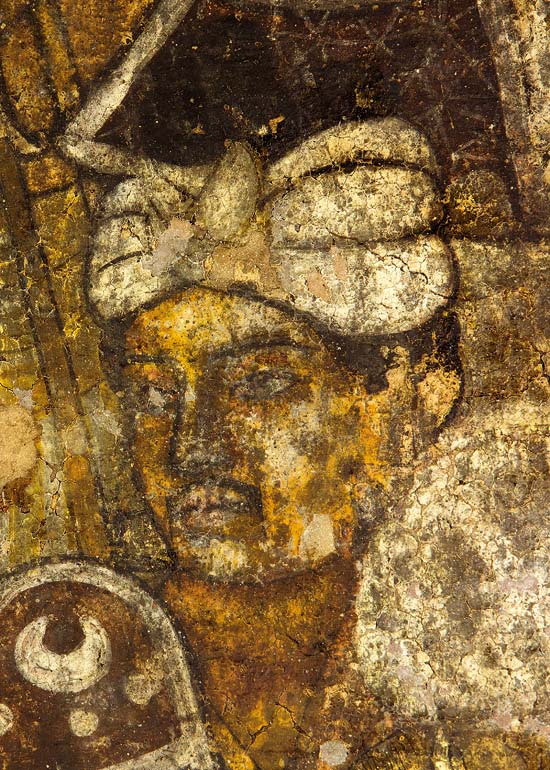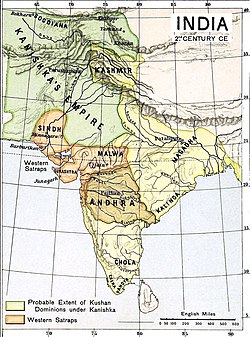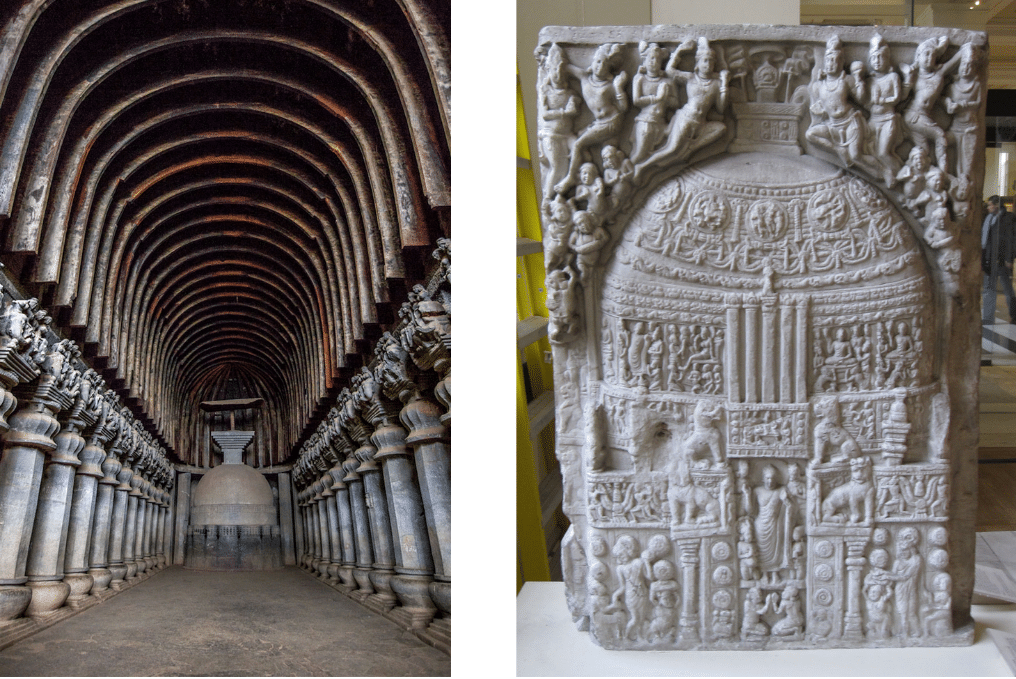Some of the oldest art in India dating back to the 1st century BC, can be found in the Ajanta caves of Maharashtra. Magnificent murals found here depict Buddhist and Hindu deities and figures. These caves and their paintings were created not long after the death of Buddha under the patronage of a dynasty called the Satavahanas. Who were they?

Many Satavahana sites have fallen to ruin, and archeological evidence and literary sources about them do not always match up. For example, the Matsya Purana – an ancient text about Indian polity, society and art- refers to the Andhra dynasty. Some historians say that the location of the Andhra kingdom matches Satavahana territory, so they are the same dynasty. Others say that the Puranas date the Andhras two centuries before the earliest evidence of the Satavahanas, and so they could not be the same.
So, what do we know about the Satavahanas for sure? When the great Mauryan Empire broke up around 180 BCE, their feudatories quickly filled the vacuum. The Satavahanas, perhaps the most enterprising feudatory, carved a large empire. Their territory comprised Andhra, Telangana and huge chunks of Maharashtra. Often, under enterprising kings, (and there were many), it included North Karnataka, Gujarat and parts of Madhya Pradesh. That was the entire Deccan region plus a lot more. They were the first major Deccani dynasty who ruled for nearly four centuries.

How did they become so great? They had a powerful army for sure. And they inherited many governance systems from the Mauryas. Yet the single most important factor was that they owned a crucial piece of geography. Their territory included the Krishna, Godavari and Narmada river basin regions where agriculture flourished. Not only was the land fertile, its location was strategic. They were right at the centre of the Indian subcontinent and their empire stretched from coast to coast. The western ports like Kalyan and Sopara received Roman, Arabic and Egyptian trade; from the east coast Indian merchants traded with the Far-East; and from all these ports there was a huge trade with the hinterland. Any North-South trade in the subcontinent had to necessarily pass through Satavahana territory. Busy commercial towns sprang up all along the trade routes. Professional guilds nurtured the growth of crafts and industry. Indeed, they were an economic superpower.
All this meant that the government earned huge revenue from taxes collected at ports and domestic trade routes. Travellers would pay tolls at various points in the kingdom. A prominent tollgate was the Naneghat pass in the Western Ghats in Maharashtra. This pass essentially made the journey between the rest of India and the North-Western coast considerably shorter. At Naneghat you can still see the remains of a pot that archaeologists believe was used to collect tolls from travellers and merchants. In nearby caves there are the remnants of monuments that honour Satavahana kings, along with several inscriptions. They were commissioned by Queen Naganika, a Maharashtrian princess whom King Satakarani married and sealed a strategic alliance. So, we have a first-hand account of life during the reign of her husband and sons.

It is from these inscriptions that we know that the Satavahanas worshipped ancient Vedic gods like Indira, Dharma and Surya, and also some early forms of Vishnu. But they weren’t just patrons of Hinduism. The wealth they collected from tolls was used to build stupas as well. Not only were the first caves of Ajanta carved in their time, they also built several huge Buddhist stupas in their kingdom, and donated the entrance archway that you can still see at Sanchi.
For more on the contributions of Satavahanas at Sanchi, read this article.

[Detour: You may also like this short video about the sculptures made by the Satavahanas at Sanchi, that give Historians incredible insights into the events that followed the death of Buddha.]
The Satavahanas also built the magnificent Amaravati stupa in modern day Andhra Pradesh. The Amaravati stupa fell into ruin, and was lost for a considerable period of time. But then the site was rediscovered in the late 18th century and huge excavation and preservation projects were undertaken.
Today you can find one of the largest collections of Satavahana and Buddhist sculptures at the Government Museum Chennai. Download the Storytrails App and take the Stone Sculptures Gallery Tour.
Archives
- January 2022
- December 2021
- November 2021
- August 2021
- March 2021
- February 2021
- January 2021
- December 2020
- November 2020
- October 2020
- September 2020
- August 2020
- April 2020
- March 2020
- February 2020
- January 2020
- November 2019
- October 2019
- September 2019
- August 2019
- July 2019
- June 2019
- August 2017
- February 2017
- January 2017
- October 2013
Featured Posts
- Tales that pots tell: Keeladi excavations AUGUST 18, 2021
- The Last Grand Nawab: Wallajah FEBRUARY 10, 2021
- How Tej Singh became Raja Desingu of Gingee FEBRUARY 5, 2021
- How Shahjahan seized the Mughal throne JANUARY 28, 2021
- Alai Darwaza – Qutub Minar Complex, Delhi NOVEMBER 21, 2020
- Marking History through British buildings NOVEMBER 17, 2020
- The last great queen of Travancore NOVEMBER 7, 2020
- Brahmi and the evolution of scripts OCTOBER 15, 2020
- The Cambodian King of Kanchipuram OCTOBER 14, 2020
- James Prinsep – the man who read the writing on the wall OCTOBER 10, 2020
- Mariamman – the Village Goddess who travelled SEPTEMBER 30, 2020
- Misnamed Monuments of Mamallapuram SEPTEMBER 28, 2020








